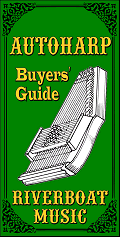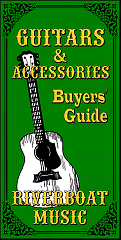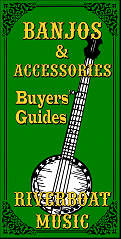
 Zither Strings |
 |
| ||||||||||||||||||||||||||||||||||||||||||||||||||||||||||||||||||




|
Zither StringsThis article is a supplement to our article "Introduction to Zithers," which briefly discusses zither history. Writing the article brought me into contact with a number of zither owners and players who are restoring or trying to restore vintage instruments, some over a century old. If the zither's framework is intact, and the face and back aren't warped or split too badly, there's always hope. If the tuning pegs aren't too rusted, they may be reusable, or you may be able to replace them. But one of the biggest challenges is finding appropriate strings. There is no standard. Zithers have been made by many companies over the last century and a half, and nearly every model had different tunings, different numbers of strings, different scales, and different number of chords. Don't Unstring Your Zither Before You Check for Replacement Sets - Like autoharps, most zithers have strings that are similar to piano strings. As long as the instruments are stored properly, the strings can last a long time. Unlike guitar strings, which can lose their tone in a matter of months. Unfortunately, many new zither (and autoharp) players assume they need new strings right away. They blissfully take the strings off to restore or at least clean up their instrument, then discover that getting the right replacement strings is tricky, to put it mildly. You may be able to find a set that is a direct replacement. But you may not, especially if yours is an obscure instrument. So check around before you remove your zither's strings. Possible Sources: When I first wrote about this on an internet forum, a number of people shared potential sources. You may have to go through the entire list to find a company that supports your model. Also, I have never used any of these resources. A friend has recommended the first one, but this is just to give you optios. Again, please check to see if you can get replacement strings before you remove the ones you have.
Custom String Sets If you can't find your specific model's strings from any of the vendors above, you may be able to order a custom set from someone who supplies strings for autoharps, like Greg Schreiber. To prepare for such an order, you need two pieces of information for every string on your zither:
When you make that list, keep all the strings in order, and the supplier should be able to figure exactly what you need. Alternative Sources If you want to try, say guitar or piano strings, you will need access to a micrometer, to measure the width of the string you're replacing. Music stores that have a guitar repair person will often have one in their shop. Guitar Strings will work temporarily, though they'll lose their tone faster than appropriate strings. Also, wound strings on zithers don't have windings where the strings cross the bridges. Guitar strings do, so they won't ring quite the same. Still, if the rest of your strings are forty years old, they'll hold their own. If you can get loop-end strings instead of ball-end strings, they'll go on easier. For example, most banjo strings are loop end. And, to be honest, quite a few zither and autoharp owners use loop end guitar, banjo, or mandolin strings for the strings that aren't wound, and just don't tell anybody. If the rest of your strings are forty years old, the new strings will still sound brighter, at least for a time. Piano Strings will work for the unwound strings and will last a very long time. But you'll have to put a loop in one end. Sorry, that's beyond the scope of this article, but I did want to say some people do this. ConclusionI am still learning about zithers, so I may have more to add here later on. But I thought posting the information I have tracked down so far might help someone else avoid an expensive mistake.Other resources will be listed as I get to them.
And please stay in touch! Other Resources
| ||||||||||||||||||||||||||||||||||||||||||||||||||||||||||||||||||
|
All material, illustrations, and content of this web site is copyrighted ? 2001, 2002, 2003, 2004, 2005, 2006, 2007, 2008, 2009,
Note: Creek Don't Rise (tm) is Paul Race's name for his resources supporting the history and music of the North American Heartland as well as additional kinds of acoustic and traditional music. For questions, comments, suggestions, trouble reports, etc. about this page or this site, please contact us.
|
|||||||||||||||||||||||||||||||||||||||||||||||||||||||||||||||||||